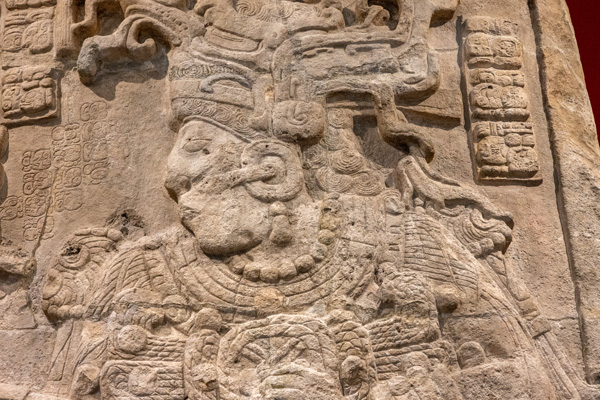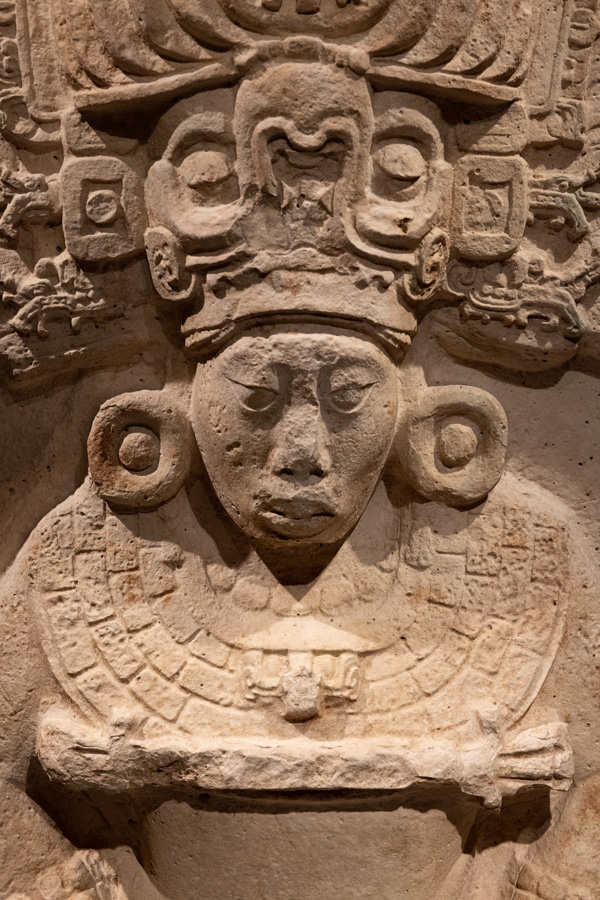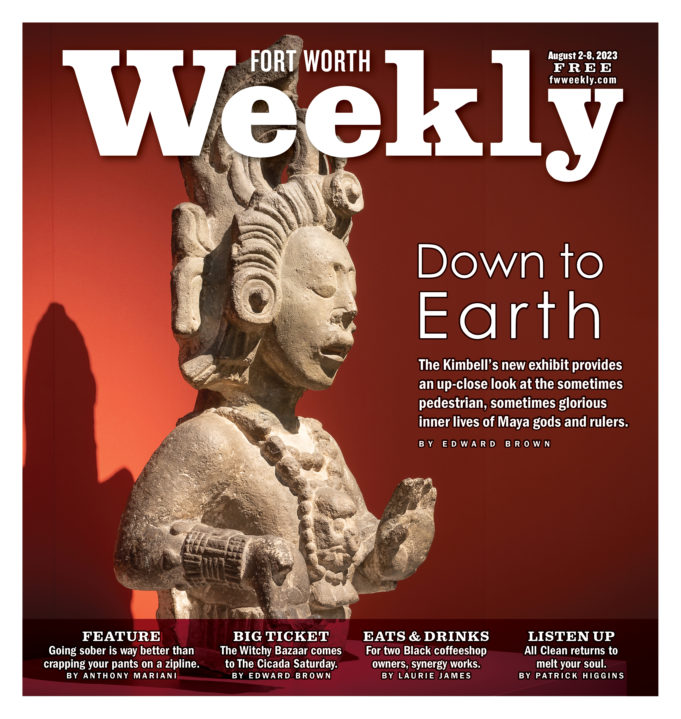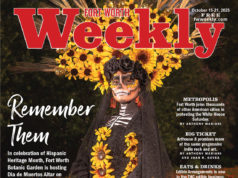Archeologists, linguists, and historians have spent centuries piecing together fragmented clues left by the once-dominant indigenous culture of Mesoamerica. The beautiful chain of Mayan art, culture, and ancient religions was battered if not broken by Spanish conquerors and forced reeducation by European colonizers even as the Maya people remained a sizeable population within Mexico, Guatemala, Honduras, and other Central American countries.
Understanding the inner lives of any ancient culture necessarily requires deciphering the beliefs and faiths that tied those societies together. When told through museums, those stories often focus on the perspective of the people who worshiped their respective gods. The Kimbell Art Museum takes a different tact with Lives of the Gods: Divinity in Maya Art, an exhibit presented in partnership with the Metropolitan Museum of Art in New York City. The nearly 100 pieces — some only recently discovered — reveal the inner lives of divine creatures who experienced life cycles, albeit on colossal timescales, just like the mortals who built temples and shrines to worship higher powers.
Looming several feet high, a massive stone slab engraved with the likeness Yuknoom Yich’aak K’ahk’ greets visitors. The ancient Maya ruler resplendently garbed in a serpentine headdress gazes eastward, toward “Censer stands,” ceramic bowls dating to the time of Yich’aak K’ahk’ himself. During his lifetime, the ruler may well have seen the ornate towers — a succession of heads of various Mayan gods — used in religious ceremonies where plumes of smoke, along with food, drink, music, prayer, and dance, sought to appease gods who controlled the climate and gifted crop yields.
Not every piece on display is imposing. Maya pottery and smaller sculptures invite viewers to examine the intricate artworks up close. One orangish-brown plate captures the cosmos with the rain god Chahk displayed in the center as his tendrils radiate outward, enveloping celestial creatures depicted throughout the work.
The exhibit is kid-friendly. The show broken into six sections has large descriptive placards describing each themed area in easy-to-understand and informative language. Maize, one sign reads, is the staple crop of the Maya and closely associated with ideas of personhood.
Nowhere did I read the Maya believed in fairies, but that didn’t stop my mind from turning to the cutesy, diminutive creatures when viewing three Maize gods. Emerging from a corn husk or flower, the divine creatures ornamented with headgear and jewelry represent regeneration and are about the size of large lollipops.
A handful of pieces bear the signatures of the artists and artisans who crafted the intricate and labor-intensive works. “Panel with royal woman,” which dates to the late 8th century, captures a woman holding K’awiil, the lightning god. Engraved into the limestone work are the signatures of two sculptors. During a guided tour last month, curator Jennifer Casler Price said the prominence of the artist credit suggests the duo were of elevated social status or at least revered for their skills. Our modern Western culture shares the tradition of commissioning the most illustrious of artists as a means of braggadocio.
A handful of pieces had been carefully reconstructed from shattered pieces. So fine are the restorative efforts, I was hard-pressed to differentiate between intact and reassembled work. “A feast at the court of King Itzam K’an Ahk IV,” one such restored artifact, shows King Itzam on a throne and was commissioned several generations after the rule of the king. The ruler courts visitors from a nearby kingdom — a reminder of the role diplomacy played even in a warrior culture.
By giving equal reverence to ornate household objects and massive stone sculptures, Lives of the Gods seeks to objectively unravel the mysterious lives of Pre-Columbian Mesoamericans. The perspective of the Maya gods is a unique one that invites a fresh perspective of the people whose history is still literally being uncovered to this very day.
Lives of the Gods: Divinity in Maya Art
Thru Sun, Sep 3, at the Kimbell Art Museum, 3333 Camp Bowie Blvd, FW. $14-18.
817-332-8451.
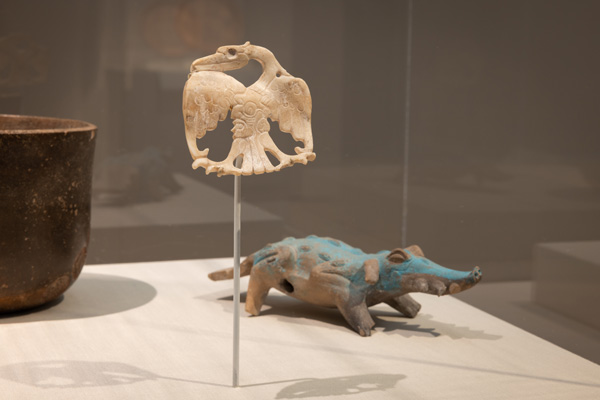
Courtesy Kimbell Art Museum
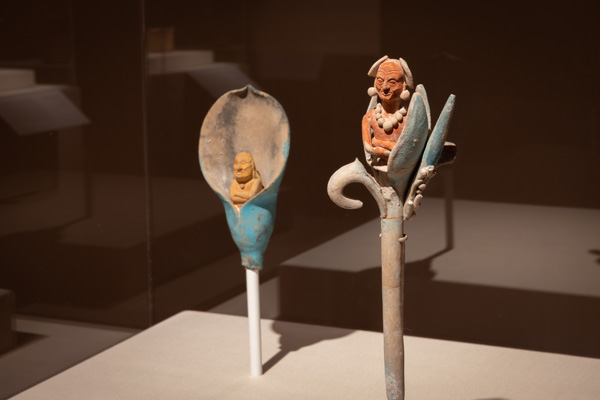
Courtesy Kimbell Art Museum
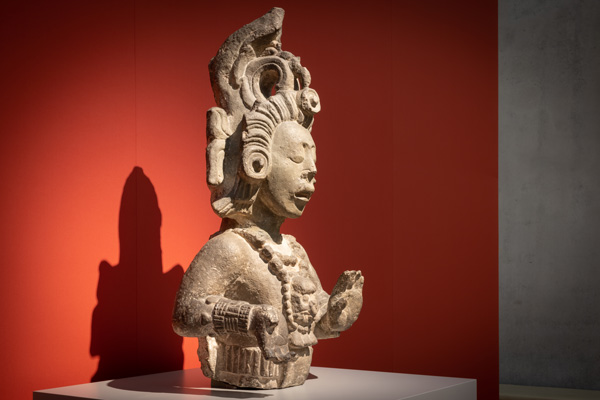
Courtesy Kimbell Art Museum
